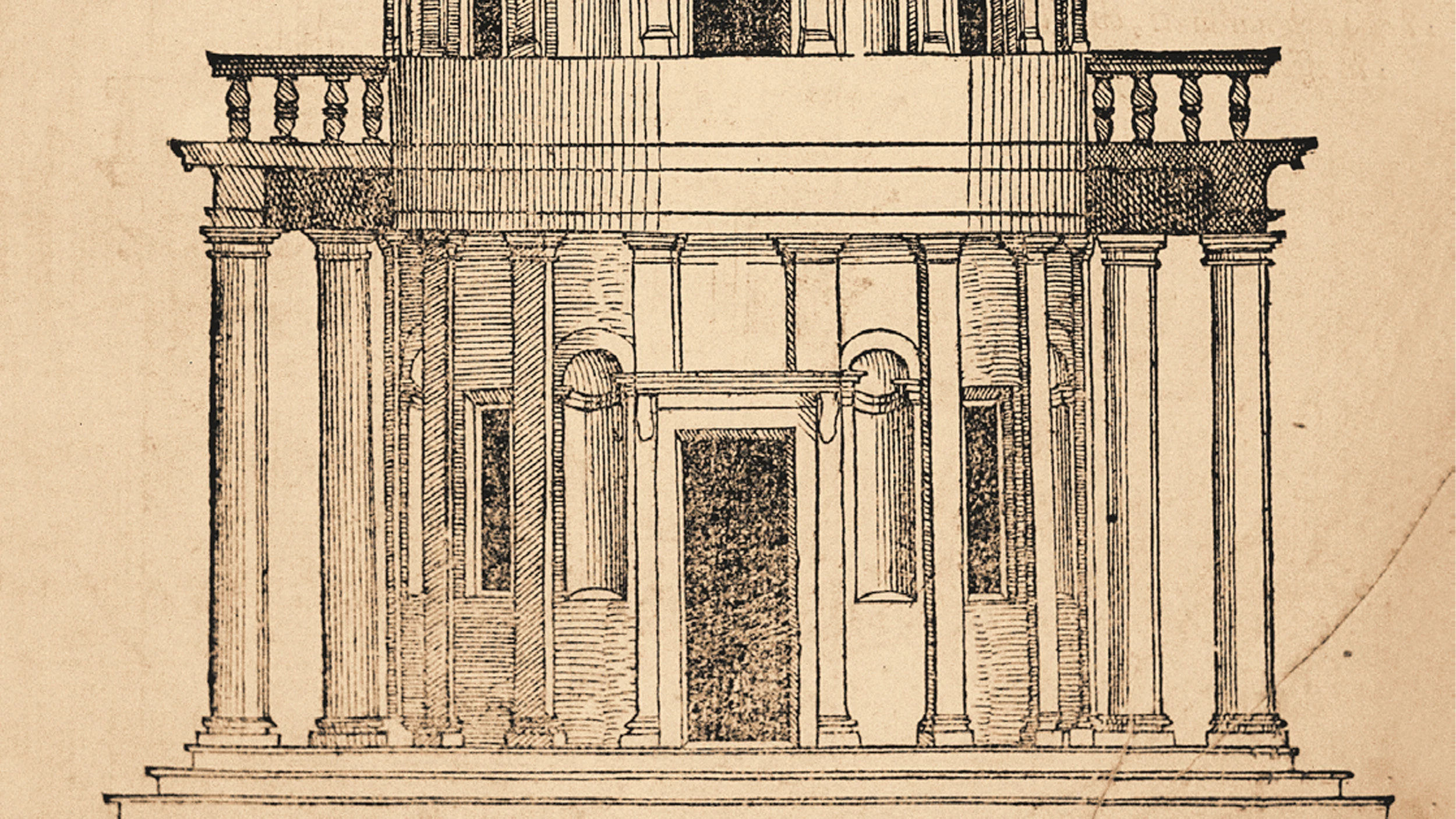
The publication of On Bramante is a major event. It fixes in place the hitherto latent position of a generation that has left many manifestations and an editorial roll-out resembling that of the magazine San Rocco, directed by Pier Paolo Tamburelli in collaboration with Kersten Geers. The architect and editor Tamburelli lacked a categorical essay such as that which he has now produced, after years of research and writing. The title leaves no doubt as to who the protagonist is, though another one shines through from the start: contemporary architecture.
With a vision that offers interpretations of the master’s oeuvre and projects them over the present in order to throw light on them, the book is an intellectual adventure, an immersion into both the Renaissance and our contemporary situation. The reader gets no vulgar account of Bramante. Tamburelli has a real interest in his works, and in examining what scholars have said about him in the course of time.
What distinguishes Tamburelli is a fascination with the present as well, with architects of today (our lack of certainty and consistency, our becoming designers of global real-estate business, our reactionary conformity as a collective). It’s as if Bramante were in secret dialogue with Tamburelli, helping him establish a continuity between Classical Antiquity, Renaissance, Enlightenment, and even Italian Tendenza. That voice tells him that the master is not so much an architect as someone devoted to an ‘art of the public,’ an art that freezes time and extends it infinitely. Someone sailing on without bothering with contingencies, in a transpolitical and transfunctional language that takes architecture as a place where maximum precision coincides with maximum indetermination of particularities.
The book’s division into short texts has a kaleidoscopic effect. Everything boils down to Bramante’s discovery of Roman art as a timeless, ever relevant language. The author goes through the master’s oeuvre, in the process presenting his peers, his evolution as an artist, his vision of architecture as something stripped of autobiographical details. Bramante is thus presented as a legacy within our reach today.
Tamburelli shows Bramante as able to function in the world yet free of commitments, afloat in a timeless realm yet pinned to his moment. An exaggeration, but the book is addictive. Is this floating spirituality what we lose with our banal commitment to function, matter, scale, or empathy?
The book illustrates a possible way of being an architect today. Well-crafted, it delves into Bramante’s mind and culture, into how he defined himself in contrast to his more cultured contemporaries’ way of looking at architecture. It journeys through moments of his life towards a finale: the political and religious crisis triggered by the Reformation, the point at which Bramante and his Vatican works play as crucial a role as Julius II or Luther.
Tamburelli’s work addresses the question of why and how much the past informs the present with more clarity and criteria than the discourses of today’s academic and publishing world.







